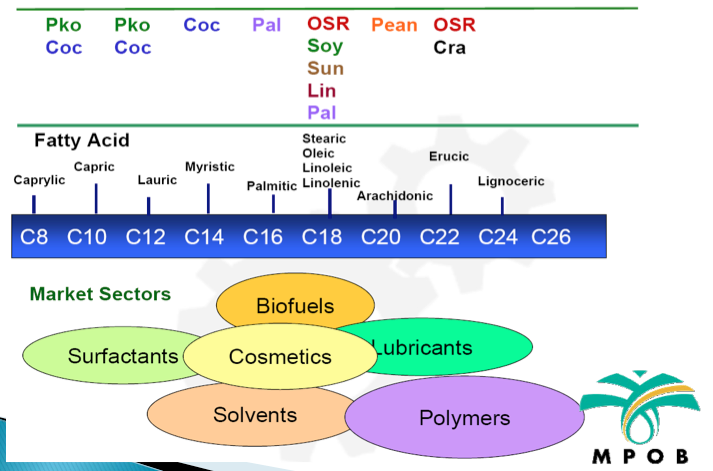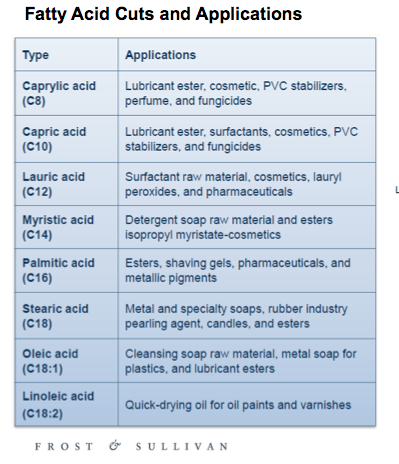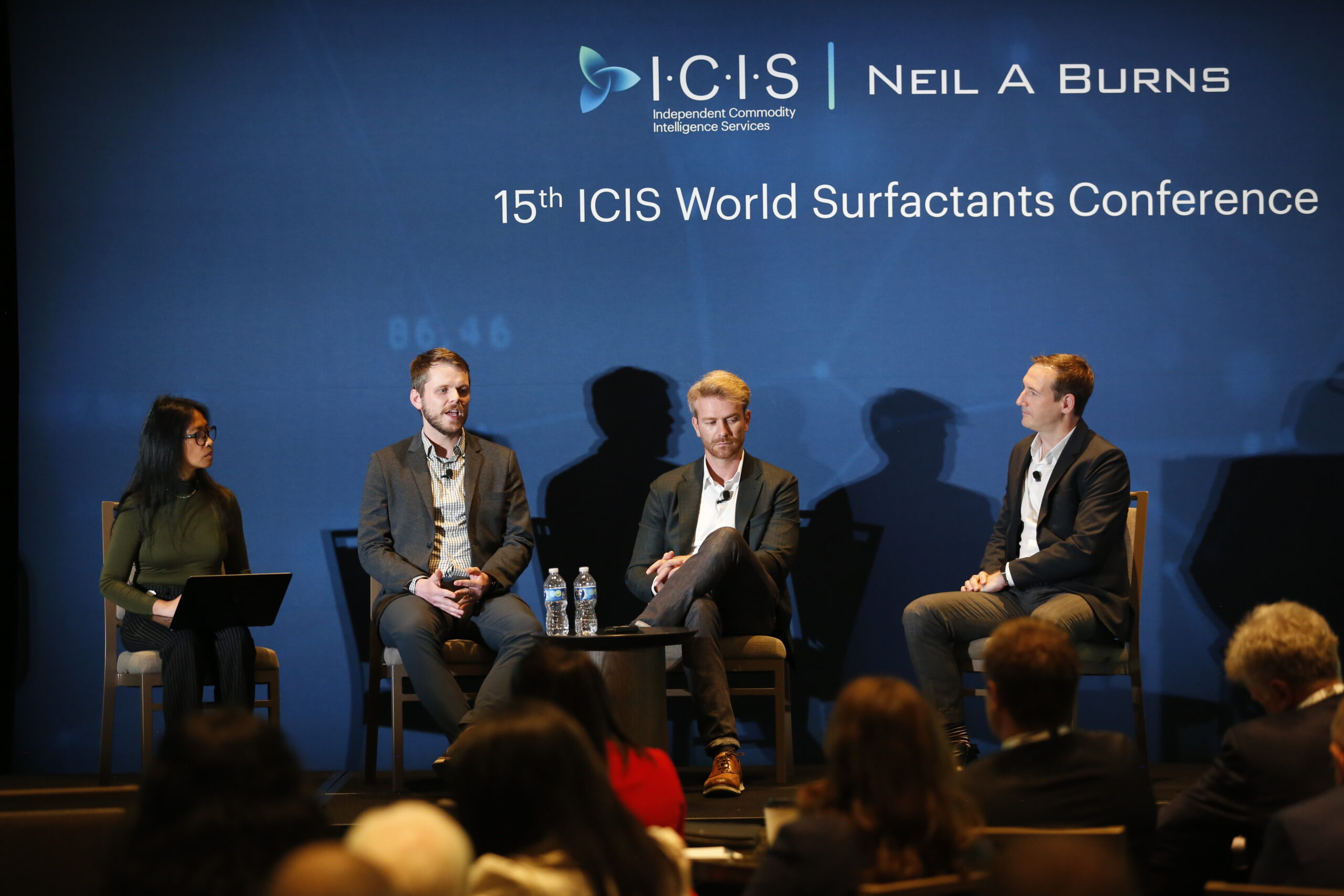Algal oil producer Solazyme announced yesterday that it has entered a $20m multi-year deal with Japan-based Mitsui & Co. Ltd. to jointly develop a suite of triglyceride oils for use in the oleochemical industry.
The deal includes further development of Solazyme’s high myristic algal oil as well as other oils that Solazyme said it is developing for the oleochemical and industrial sectors. End use applications can include high-performance polymer additives, aviation lubricants, and toiletry and household products.
Now the composition of the fatty acids contained in a particular oil determines the further use of the oils. For example, coconut oil and palm kernel oil (or called lauric oils) have high share of fatty acids with short chain length (C8 and C10) or medium chain length (C12 and C14).
These are particularly suitable for further processing to surfactants for detergents and cosmetics application. Palm oil, soybean, rapeseed and sunflower oil as well as animal fats such as tallow contain mainly long-chain fatty acids such as C18s, saturated and unsaturated fatty acids, which are used as raw materials for polymer applications and lubricants.
I came across a slide from the Malaysian Palm Oil Board (presented at the 2011 ICIS World Oleochemicals conference), which might make it easier to understand which natural oils have the most fatty acid component, and their main industrial use.
This next slide from Frost & Sullivan, meanwhile, shows different fatty acid cuts and particular industrial applications that they are more used for. This presentation was taken from last month’s ICIS Asian Oleochemicals conference held in Kuala Lumpur, Malaysia.
Solazyme’s technology enables manipulation of algae to produce oils that are tailored with specific fatty acid components. For example, the company was able to produce tailored algal oils with high levels of lauric acid or high levels of myristic acid, or even oils that have increased or decreased saturated fatty acid components.
Mitsui said it is looking forward to strengthening its position in the oleochemical industry through the successful development and commercialization of Solazyme’s oils as potential source of new sustainable materials to oleochemical companies including Mitsui’s oleochemical subsidiary, Palm-Oleo Sdn.Bhd based in Malaysia.
Asia, by the way, accounts for 58% of the total world production of fatty acids, and Malaysia, China, Indonesia and India account for 92% of Asia’s fatty acid production, according to IHS’ Natural Fatty Acids report released last year in July. Global fatty acid consumption is reportedly expected to grow at a rate of 3%/year during the next five years.
Also check out the blog’s recent post about oleochemical updates, and Solazyme’s progress on its planned commercial production here in the US and in Brazil.





